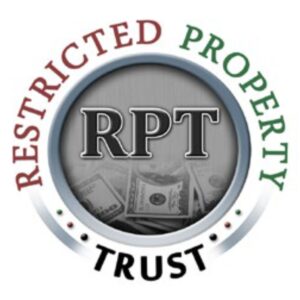Building Financial Fortitude: The Benefits of Restricted Property Trusts
Building Financial Fortitude: The Benefits of Restricted Property Trusts
Blog Article

In an ever-changing financial landscape, protecting your assets is more crucial than ever. Restricted Property Trusts (RPTs) are a smart way to ensure your financial security and provide a reliable way to protect your assets from risk and risks. Restricted Property Trust function and why they are a powerful instrument in protecting assets.
What Are Restricted Property Trusts?
An Restricted Property Trust is a specially designed financial vehicle that is intended to guard and manage precious assets by imposing specific limitations on their use as well as transfer. Unlike traditional trusts, RPTs restrict how the assets can be access or distributed. This provides a level of security against claims or legal concerns.
Key Benefits of Restricted Property Trusts
1. Enhanced Asset Protection: One of the primary advantages of RPTs is their ability to shield assets from lawsuits, creditors and other financial risks. When assets are placed in an RPT, investors can safeguard their assets from legal actions or financial disputes, making sure that their assets remain protected.
2. Tax Advantages: RPTs can provide tax benefits that are significant. Contributions to the trust might be tax-deductible, and the earnings generated by the trust's assets may enjoy favorable tax treatment. This can result in substantial tax savings over time, which can improve the overall financial health for the person.
3. Strategies for Estate Planning RPTs play a crucial function in estate planning by allowing individuals to transfer their assets to beneficiaries, while keeping the ability to control when and how the funds are divided. This can help minimize estate taxes and avoid probate's complications which can make it easier to transfer wealth.
4. Controlled Distribution: Despite the limitations, RPTs offer flexibility in asset management. Trustees can receive specific instructions on how they should manage the assets, while ensuring that they are used in line with the person's financial goals and legacy plans.
Setting Up a Restricted Property Trust
Establishing an RPT involves several steps. First, consult with an expert financial advisor or estate planning lawyer who is skilled in RPTs. They will help you create an RPT that is suitable for the specific requirements of your situation. The trust agreement will detail the restrictions on asset use and transfer, and specify the roles and responsibilities of trustees.
Regular updates and reviews of the RPT could be necessary to ensure it is kept to be in line with your financial goals and is able to adapt to any changes in your financial situation.
Conclusion
Restricted Property Trust offer a method of strengthening your assets and increasing the security of your finances. By leveraging the unique benefits of RPTs, you can protect your wealth, enjoy tax benefits and speed up your estate planning. A consultation with a knowledgeable professional is crucial in adjusting the trust to your specific requirements, making sure that assets remain protected and your financial security is assured. Make use of the potential of RPTs to help you build a strong foundation for long-term financial stability as well as peace of mind. Report this page